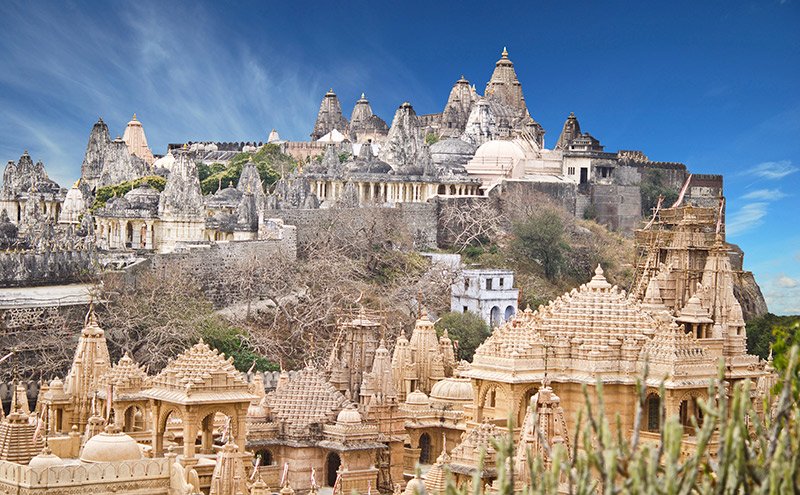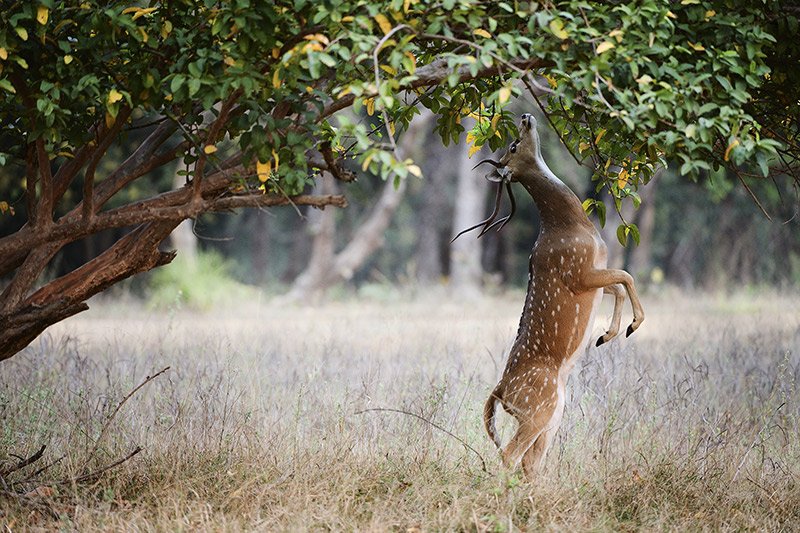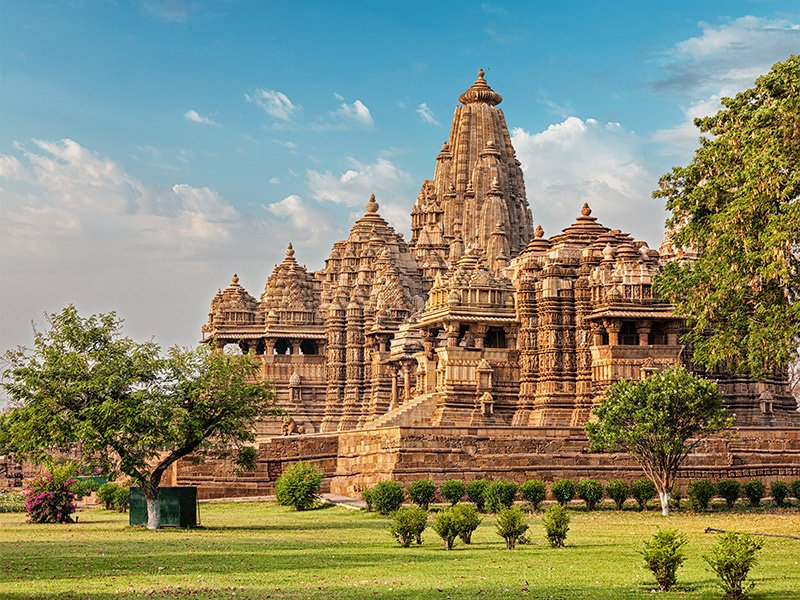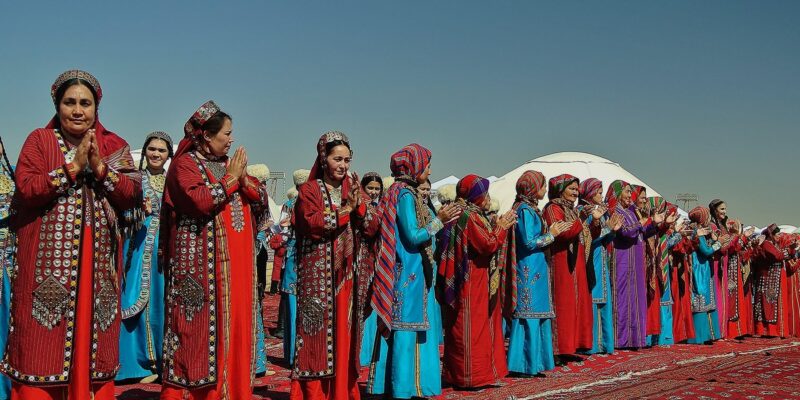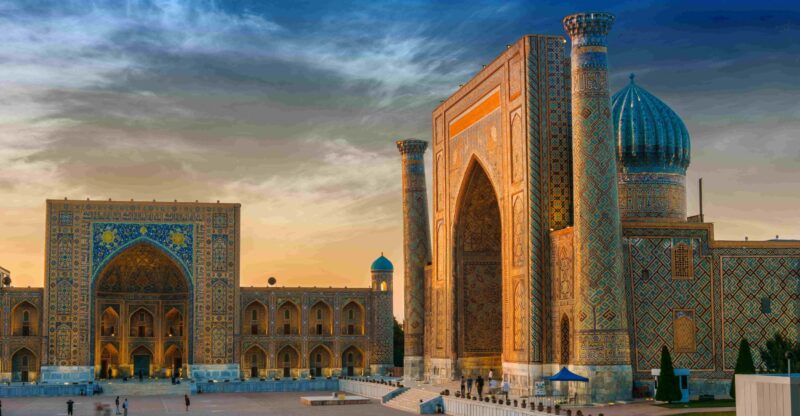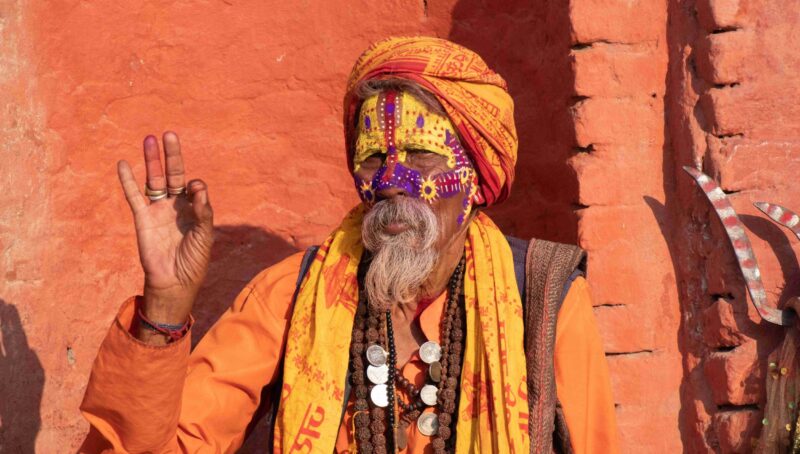| Destination | Tour Code | Start | End | Trip Status | Pricing Per person | |
|---|---|---|---|---|---|---|
| India - Big Cats and Small Kingdoms | IBC/041225 |
Dec 04, 2025 Thursday |
Dec 19, 2025 Friday |
Guaranteed - Contact Us for Availability |
£2,965.00
Single Room Supplement: £875.00
|
Contact Us |
Big Cats and Small Kingdoms
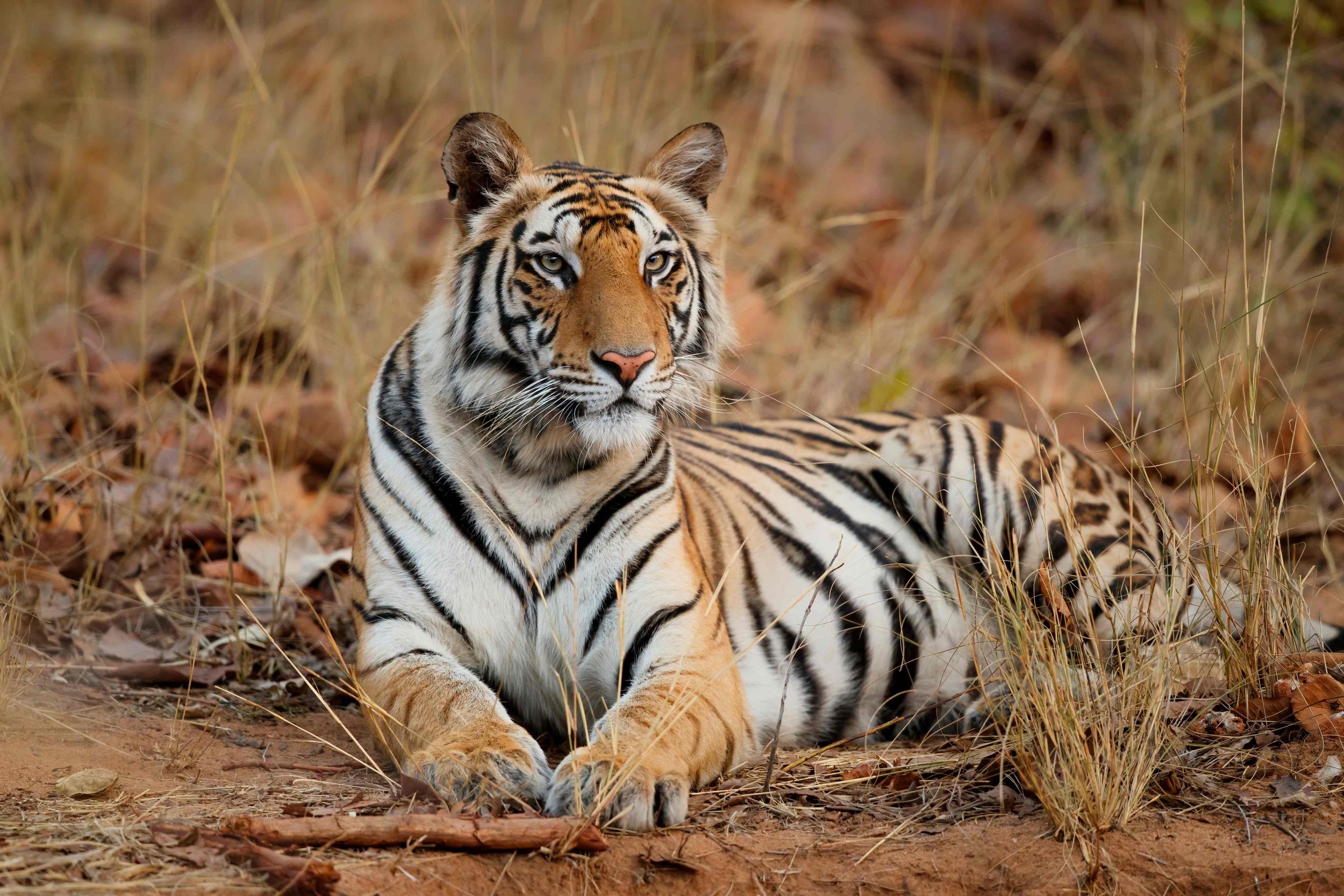
India has extraordinarily abundant and diverse wildlife. On this remarkable tour you seek out three iconic large cats: search for tigers in Ranthambore National Park, leopards in the remote areas of southern Rajasthan and the only remaining Asiatic lions in Gir National Park, Gujarat. This tour is not confined to wildlife though. It offers fascinating insights into the customs of tribal rural village life and includes a climb up the magnificently poised Jain temples in Palitana. Add to this the dramatic salt flats and marshland of Kutch, home to the rare Indian Wild Ass. This tour boasts a great combination of culture, history and wildlife and is not to be missed.
Arrival and departure transfers
Overland transport throughout with professional driver
All accommodation
Services of English-speaking guide / tour leader
Meals as listed, B – Breakfast, L – Lunch, D – Dinner
Entrance fees for sites listed as part of the itinerary
International flights (, contact , us, for expert advice and a quote)
Any airport taxes
Travel Insurance
Visa – when required
Drinks
Items of personal nature
Tips (Discretionary)
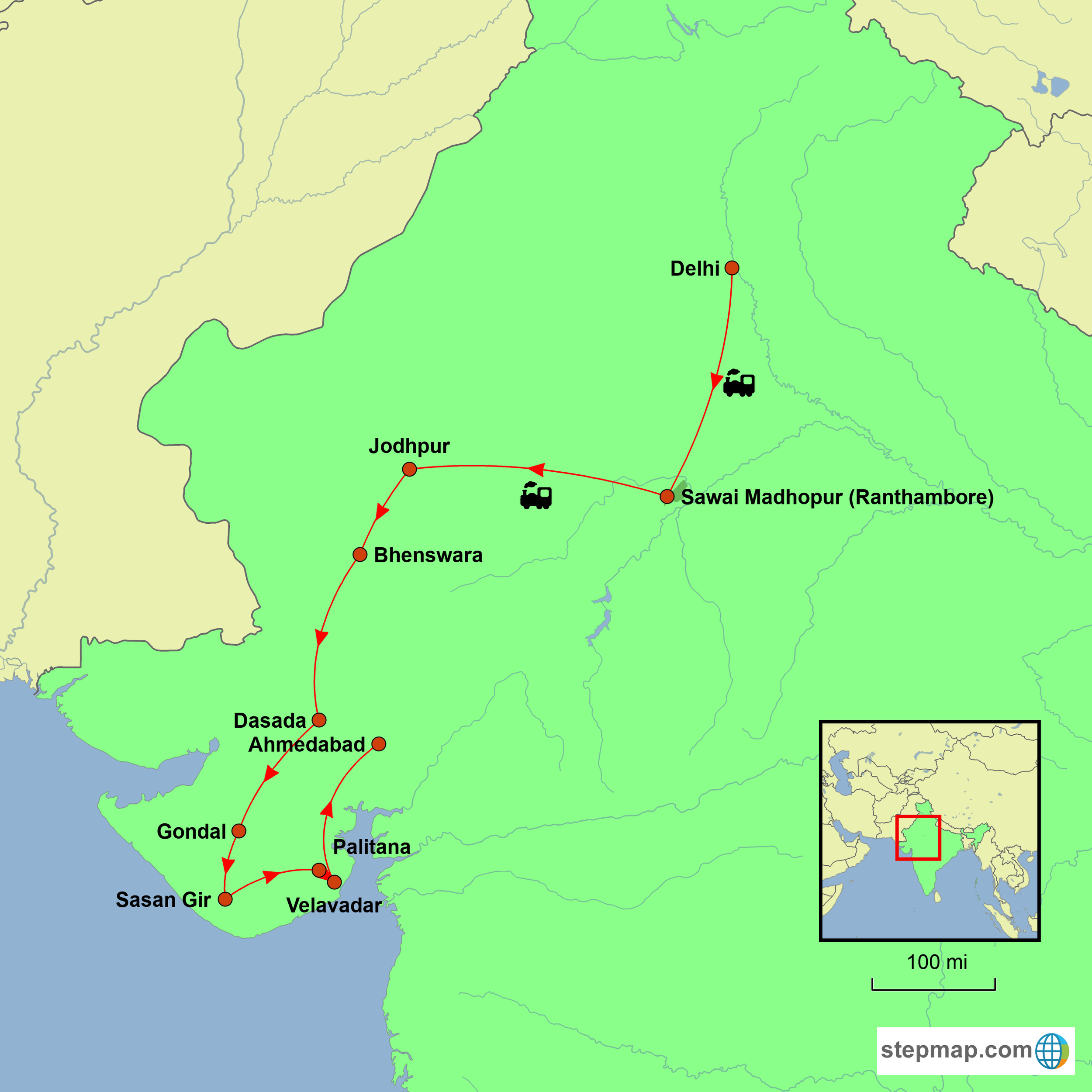
The India Big Cats and Small Kingdoms tour is a 16-day journey through India’s wildlife and cultural landmarks. It begins in Delhi with a visit to the vibrant Old Delhi, before travelling to Ranthambore National Park for tiger safaris. The tour continues to Jodhpur’s Blue City, where you explore Meherangarh Fort, followed by a visit to Bhenswara for a tribal village experience and leopard tracking. Next, you visit Mount Abu, a cool hill station, and the Dilwara Temples. The adventure then takes you to Gujarat’s Little Rann of Kutch, home to the Asiatic Wild Ass and thousands of migratory birds. After exploring Junagadh’s Uparkot Fort and Gondal’s Naulakha Palace, you’ll visit Gir Forest National Park, the last home of the Asiatic Lion. The tour concludes with visits to Palitana’s Jain temples and Velavadar National Park, where you’ll spot blackbuck antelope and raptors. This tour blends wildlife safaris, cultural exploration, and historic sites, offering a unique adventure across India’s diverse landscapes.
Ranthambore National Park – Tiger Safari
Explore one of India’s top tiger reserves, offering excellent chances to spot Bengal tigers and other wildlife in its open, rugged landscapes.
Gir Forest National Park – Asiatic Lions
Experience a thrilling safari in the only sanctuary for Asiatic Lions, where you can observe these majestic creatures in their natural habitat.
Meherangarh Fort, Jodhpur
A stunning example of Rajasthan’s architectural grandeur, this massive fort offers breathtaking views over the Blue City and fascinating historical insights.
Little Rann of Kutch – Asiatic Wild Ass Sanctuary
A vast, surreal desert landscape home to the endangered Asiatic Wild Ass, along with hundreds of migratory birds, including flamingos and pelicans.
Palitana Jain Temples
Climb the 3,950 steps to the top of Shatrunjaya Hill, where over 800 intricately carved Jain temples offer spectacular views and spiritual significance.
Download the Information Pack
To download the tour full dossier, which includes a complete day-by-day itinerary breakdown and detailed tour information, fill in the details below.

Foreign Office Travel Warnings Before booking your tour, please familiarise yourself with the country specific information provided by the UK’s Foreign, Commonwealth and Development Office (FCDO) – www.gov.uk/foreign-travel-advice. This includes important information such as latest immigration requirements, and details of any travel advisories. We constantly monitor the advice posted by the FCDO. In particular we will always advise clients of any travel warnings. At present there are no warnings against travel to the parts of India that we visit on this tour. Please feel free to contact us should you have any specific concerns or would like to know in detail what measures are being taken to ensure visits remain trouble free and without incident. It should be noted that this information applies to British citizens. Other nationals are asked to check the current position of their respective government. Visa Information At the time of writing British, US and Australian nationals require a visa for a tourist visit to India. For further details please visit the applicable website shown below. British Nationals – www.gov.uk/foreign-travel-advice US Nationals – travel.state.gov/content/travel/en/international-travel.html Australian Nationals – www.smartraveller.gov.au Other nationals should check the latest requirements with the authorities in their home country, or with the destination’s nearest embassy or consulate. Should you require any documentation to support a visa application, such as a letter of invitation, upon request this will be provided by Undiscovered Destinations after receipt of your balance payment. As it is the travellers’ responsibility to ensure that they meet all entry requirements it is essential that you check the rules and any other conditions at the time of booking and again when making your balance payment. In addition, we would strongly advise that you make a final check around two weeks before your arrival. This is important as requirements can change at short notice. Undiscovered Destinations, when possible, will provide guidance about entry rules, but in the first instance please contact the relevant authorities, including the applicable embassy or consulate for assistance. Passports It is your responsibility to ensure that you are in possession of a full passport, valid for at least six months after the date of return to your country. We strongly advise that your passport contains a minimum of two blank pages, as this may be a requirement of the local immigration authorities. In addition, certain countries will stipulate that the two blank pages are opposite each other. If you are unable to meet these requirements, you may be refused boarding by your airline or denied entry by the immigration authorities. For specific information about the requirements for your destination please check with the country’s embassy or consulate. Alternatively, UK citizens can visit www.gov.uk/foreign-travel-advice. Vaccinations & Protection As with travel to most parts of Asia, we strongly recommend that you contact your doctor’s surgery or a specialist travel clinic for up-to-date information, advice, and the necessary vaccinations. For a visit of less than one month, almost certainly you will be advised to have immunisations against the following: Diphtheria and Tetanus, Hepatitis A, Typhoid, Meningitis. The use of a DEET-containing insect repellent is highly recommended. The legal status and regulation of some medicines prescribed or purchased in your home country can be different in other countries. If you are travelling with prescription or over-the-counter medicine, travellers from the UK can refer to the guidance provided by the National Travel Health Network & Centre and published on the Travel Health Pro website. For further information on the legal status of a specific medicine, you will need to contact the embassy, high commission or consulate of the country or territory that you are travelling to. Travel Insurance It is a condition of booking with Undiscovered Destinations that you have adequate valid travel insurance. It is your responsibility to arrange appropriate travel insurance and ensure you have read and understood the full terms and conditions of your travel insurance policy to ensure that you are covered for all activities you intend to undertake whilst on the tour, including all optional activities. Your Insurance Policy must fully cover you for medical expenses (including cover for Covid-19 conditions) and emergency repatriation to your home country and be valid for the entire duration of your holiday. Local Conditions When travelling to our destinations, many of which are underdeveloped and untouristed by mainstream tourism, a good deal of patience and a sense of humour is an important attribute. This will help you to cope with problems such as ageing or poor infrastructure and when maintenance may not be as high as we would always like. The choice of appropriate accommodation in some towns and cities (particularly the smaller places) can be limited, and standards of both service and maintenance can be less than polished. Guides and other service providers in some of our destinations do not always have the decades of collective practice and experience that their counterparts in more developed countries can draw upon. Although we will always try and resolve any issues as quickly as possible, on occasions there may be some shortcomings which no matter how hard we try will be unavoidable.
